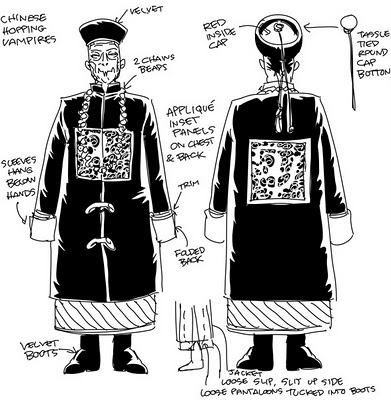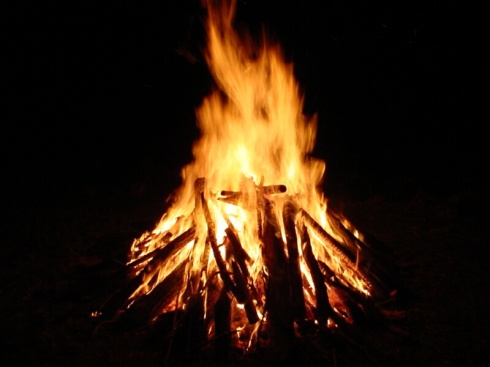You are currently browsing the tag archive for the ‘Taoist’ tag.
Tag Archive
The Monkey King
February 10, 2016 in Art, China, Crowns, Deities of the Underworld, History, Humor, Literature, Opinion, Uncategorized | Tags: Allegory, Buddhist, Chinese, epic, Journey to the West, King, Kuan Yin, magical, Monkey, monster, myth, pilgrim, Sun Wukong, Taoist, 孫悟空 | by Wayne | 1 comment

There are four great masterpieces of classical Chinese literature (or possibly five, if you count erotic fiction…but that is a story for another day). The most fantastical and supernatural of these four masterpieces is The Journey to the West…and the indelible hero of The Journey to the West is a monkey, Sun Wukong AKA the Great Sage equal to Heaven AKA Pilgrim Sun AKA the Monkey King (classical Chinese literature has a lot of sobriquets).

At the beginning of the story a vast round stone boulder sits atop the Mountain of Flowers and Fruit (a paradisiacal mountain island off the coast of China). Warmed by the sun and caressed by the wind since the beginning of time, the granite egg cracks open and Sun Wukong emerges, a fierce clever monkey made of obdurate stone. Immediately after emerging from this egg, golden beams shoot from his eyes which are visible throughout the firmament (a harbinger of the monkey’s future).
Sun devotes himself to mastering Taoist magic (eating sacred fruits, drinking elixers, collecting magical items and learning spells). He becomes king of the monkeys and starts to participate in the wider affairs of the world…but as a demonic monster who eats people and kills for fun. When he learns of the splendors of heaven and the power of the Jade Emperor (the Celestial monarch at the center of a vast spiritual bureaucracy) he decides to make himself into a deity and hilarious, horrifying chaos ensues.

But all of that is backstory. In the story proper, Sun has grown up. His attempt to overthrow the cosmic order is behind him…mostly…and he has devoted himself to self-mastery. With a bit of (coercive) help from Kuan Yin he has transformed his personality. The chaotic animal demon who killed innumerable people with dark magic has become an ascetic Buddhist monk and he has a difficult assignment: take care of a pathetic weakling (human) monk in a seemingly endless journey across monster-haunted wilds of mythical Asia. Along the way the monk (the spirit) and the monkey (the mind) are joined by a pig god (the appetites) and Sandy, a river monster (???). It’s like a twisted cross between Kung Fu, Pixa, and Homer.

That is a sort of book-report blurb about an epic which is really an allegory of Buddhist virtues. The monkey king’s Taoist powers mirror the intellect: he has godlike powers of transformation, apprehension, and trickery, but these are of no use without more subtle virtues. The search for these elusive strengths is the real Journey to the West. The story has shaped Chinese cosmology and mythology ever since the book came out in the Ming Dynasty. Since then Monkey has been kind of an actual religious figure…but one who has moments where he is more like Bugs Bunny or Charlie Chaplin than like Jesus or Kuan Yin.

This all sounds ridiculous—and it is. The juxtaposition of high-minded religious philosophy and low comic hijinks has made the Monkey King universally known in China. There is a deeper reason for this popularity: reality itself is a ridiculous mix of cerebral, noble, and profane elements. The monkey king is a fine mirror for our own madcap primate attempts to reconcile these incompatible impulses.

Jiāng Shī–Hopping Corpses
October 17, 2012 in China, Deities of the Underworld | Tags: burial, China, Chinese, claws, clothes, corpse, energy, funeral, Ghost, ghosts, hopping, jiāng shī, qi, Qing, reanimated, Taoist, traditional, undead, vampire, vampires, yin, 殭屍 | by Wayne | 7 comments
Ghosts and the disquieted dead abound in China and, as elsewhere, these manifold specters hold up a dark mirror to society as a whole. Chinese folklore features hungry ghosts, hanged ghosts, sexually abused ghosts, and happy, helpful servant ghosts. There are the wrongfully dead ghosts who were denied justice by merciless bureaucrats and there are drowned ghosts who always lurk in the water grabbing at things. There are ghost brides, ghost thieves, and ghost hunters. All of this is in addition to the countless fiends, demons, nature spirits, immortals, monsters, gods, and supernatural animals which make up the endlessly invigorating Chinese pantheon. Yet out of all the many sorts of ghosts and revenants, one particular category of Chinese apparition stands out as an exemplary type specimen of the undead. These are the jiāng shī, the hopping reanimated corpses which are analogous to the vampires and mummies of western horror. In English such undead beings are called hopping ghosts or Chinese vampires.
Like vampires, jiāng shī feed off of the life energy of the living and command supernatural powers, but there are some big differences. Jiāng shī are created in many different supernatural ways when the po, an aspect of the soul, is returned to the body (this often involves a shock of yin energy from cats or the moon), but they are essentially of two varieties: 1) recently dead souls who died far from home and literally hop back to where they are from sometimes with the help of a Taoist sorcerers, and sometimes through pure homesickness ; and 2) ancient corpses which have gone so long without decaying that they become reanimated by dark yin magic. The Chinese name means “stiff corpse” and the undead monsters are literally stiff from rigor mortis. Because of this handicap, jiāng shī have a hard time with mobility and their movements are often unnatural and erratic—hence they are believed to move by means of hopping (although some of the more powerful and ancient ones are also reputed to fly). Unfortunately their lack of agility is more than made up for by superhuman strength.
Contemporary hopping ghosts look like contemporary corpses–except for the fact that they are animated and are hopping violently and quickly towards you to suck out your qi energy (oh and they have long sharp fingernails). Ancient jiāng shī, however, have a very distinctive and operatic look: they are dressed in Qing dynasty graveclothes and they have pale green skin and white hair (as well as claws and fangs). Both sorts of hopping ghosts bear an overwhelming smell of putrefaction with them—which is so appalling that it is occasionally fatal. They feed on qi energy which they strangle/gouge out of their victims, either manually or by hopping on top of the heads of sleepers.
If you are having trouble with hopping ghosts, there are several ways of dealing with them. The animated corpses are driven off by Taoist mirrors, brooms made with real straw, rice, or fresh chicken blood. Sometimes applying a yellow and red Chinese death blessing to their forehead will give the jiāng shī peace (although this should be attempted only in extreme circumstances!). They cannot abide the light of the sun. In the end though there is only one sovereign remedy to permanently get rid of jiāng shī, and it is the ultimate solution to any undead problems. If you burn a jiāng shī and all of its accessories (creepy funeral suit, coffin, etc.) you will be permanently rid of the monster.
Han Purple
November 1, 2011 in China, Color, History | Tags: barium copper silicate, Chinese, discovered, Emperor, Han, manufactured, pigment, purple, Qin, Soldiers, synthetic, Taoist, Terracotta | by Wayne | 2 comments
In the spring of 1974 a group of farmers digging a well in Shaanxi China about one and a half kilometers (1 mile) north of Mount Li stumbled into an amazing find. A life-sized army of terracotta soldiers numbering over 8000 was entombed in the immense necropolis of Qin Shi Huang, the first emperor of China who lived from 259 BC – 210 BC. However the story of the despotic Qin Shi Huang (one of history’s most remarkable figures) and his extravagant mausoleum will have to wait. This post is not about the cruel emperor or his terracotta army, but is rather about the colors found on the terracotta figures, which were originally lacquered with a rainbow of bright colors– pink, red, green, blue, black, brown, white, and lilac. One of the pigments discovered by archaeologists was Han purple, a manufactured pigment which was in use in China from about 1200 BC to 220 AD. The secret to making Han purple was lost in antiquity and could not be rediscovered until modern spectroscopy helped chemists rediscover the materials used.

A Modern Reproduction of how the figures originally looked--although no two were painted the same (Credit: British Museum/C Roth)
Many scholars believe that Han purple was accidentally discovered by Taoist alchemists seeking to create synthetic jade. The compound was a barium copper silicate which was fired for long periods of time at temperatures around 900-1000 °C. The compound was probably produced in kilns north of the city of Xian (which was once known as Chang’an and was the capital city of China during the Zhou, Qin, Han, Sui, and Tang dynasties).
Han Blue was a dark bluish purple/indigo. It became more purplish over time as the barium copper silicate deteriorated and red copper oxides were formed. The pigment was used for beads, ceramic vessels, paintings, and for octagonal pigment sticks (which may have had a ceremonial value in their own right).
Han purple had a very similar companion compound–Han blue—which was also a barium copper silicate. Because of certain quirks of chemistry, Han blue was more lightfast than than Han purple and had fungicidal properties to boot. This allowed Han blue to last for the long centuries, whereas Han purple is now known mostly from faded traces. Han purple was not fungicidal and compounds (namely oxalates) produced by certain long-lived lichen caused the pigment to turn into light blue powder.







